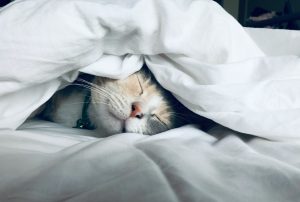Mindfulness
How Can You Help (the World)?
As we embark on this first socio-political year of a potentially frightening four, I occasionally reflect on what I can do, as someone who has little time or direct involvement, to protect our world and/or make it a better place.
 The first and most obvious is to be charitable whenever possible. Be kind to others. This is easy on our good days when we feel good. Any jerk can do that. The challenge I pose to myself and others is to do so when we feel angry or wronged, exhausted or unwell. This doesn’t mean to not take care of oneself. It just means to still be kind when someone cuts you off on the road or wrongs you. My wife, for example, likes to give reckless drivers the benefit of the doubt: “Maybe he has diarrhea.” You can use that one. Then again, maybe she doesn’t have diarrhea. Maybe she’s just perpetually miserable and rushed, which one might argue is even worse than diarrhea!
The first and most obvious is to be charitable whenever possible. Be kind to others. This is easy on our good days when we feel good. Any jerk can do that. The challenge I pose to myself and others is to do so when we feel angry or wronged, exhausted or unwell. This doesn’t mean to not take care of oneself. It just means to still be kind when someone cuts you off on the road or wrongs you. My wife, for example, likes to give reckless drivers the benefit of the doubt: “Maybe he has diarrhea.” You can use that one. Then again, maybe she doesn’t have diarrhea. Maybe she’s just perpetually miserable and rushed, which one might argue is even worse than diarrhea!
The second is to use the app 5CALL, to call your local congresspeople, make requests and take stands against some of the unethical proposals presently in motion in Washington.
The environment is perpetually and obviously a consideration. Recycling, composting, carpooling, electric cars, or public transportation are all helpful, but I think if everyone just did the thoughtful little things, over time it would make a big difference. For example:
- Bring a tote bag when you shop. When you do get a plastic bag be sure to hold onto it to recycle later. Lots of places like Staples or Target recycle any and all plastic bags.
- If you’re out and get a coffee, tea, or matcha or whatever, hold on to the empty cup whenever possible, with the same intention to recycle later. It is time we stop taking such luxuries as something we are entitled to. Take out and to-go cups are a modern privilege, extremely recent in human history, and should be treated as such. Almost every cafe’s cups are biodegradable.
- Just like we shouldn’t take anything for granted, nor should we overlook the small things within the actions. If you get food delivery be sure to recycle, not just the big paper bags and plastic containers, but also the little condiment cups and even most plasticware. It can be tedious to rinse these things out—especially the tops—but again, being able to receive delicious condiments by delivery should be viewed as a luxury and treated as such.
- Same principle applies to plastic trash bags, in my opinion. The kitchen garbage where food and coffee grounds and all kinds of funk goes clearly needs a bag. But what about your recycling bins, or even your bathroom trash? Does something that will be filled mostly with just tissues really need to repeatedly expend plastic, or can the bin itself simply be cleaned once in a while?
- Batteries: I understand there are conflicting opinions on this, but it might be worth looking into recyclable batteries. If you don’t, at least be sure to recycle your used.
- Buy small. Don’t support Amazon, as much as possible. Much like electric cars, it’s more expensive and less convenient, but good karma for you!
Circling back, to self-care and kindness, I believe it is all peoples’ responsibility to have some meditation practice, as well as either yoga or qi gong, and I believe even the busiest of us can take 10-20 minutes for each on most days.
- For Buddhist dharma talks I recommend either Won Buddhism on the east side or The Tibet Center on the west.
- If it’s just meditation you prefer, I enjoy Sam Harris’ Waking Up app, though I know there are many good ones. Personally, I require weekly dharma talk meetings to serve as a reminder to continuously intend to reshape my own harmful mental conditionings.
- For yoga I love Shri Yoga or NY Loves on the Upper West.
- For Qi Gong, as always I highly recommend working with Jonathan Breshin, William Kaplanidis, or Henry McCann.
Stay warm everyone! Wear hats, hoods, scarves, and warm socks. Eat ramen and bone broths and limit sugar as much as possible.
Tips for Resting & Digesting (food)
 It’s nice to eat nice foods—expensive and high quality foods—organic foods, locally grown, homemade, etc. But it isn’t just about what we eat, but how we eat, that will maximize the conversion of our food into nutrients, which will convert into globally good health.
It’s nice to eat nice foods—expensive and high quality foods—organic foods, locally grown, homemade, etc. But it isn’t just about what we eat, but how we eat, that will maximize the conversion of our food into nutrients, which will convert into globally good health.
Whether you use your hands or utensils is up to you and your social circle, but across the board everyone advises chewing our food until it is liquefied in our mouths. This is for the same rationale that Eastern medicines recommend warm and cooked foods—they are easier to digest. Whenever I bribe my toddler with dark chocolate, cheese, or bread, she’s suddenly lightning fast at shoveling two handfuls of vegetables into her mouth in anticipation of her treat; my wife and I have to remind her, almost like a cheerleading chant: “Chew, chew, chew!” “Mastica!”
Each organ channel has its many correspondences, to particular seasons, colors, of the five elements, as well as shapes. The spleen and stomach are ruled by circles (and the color yellow), which means the ideal way to eat and digest is at a roundtable (of loved ones), I suppose with a yellow tablecloth. Ironically, such interior design would likely make my wife vomit.
The point is, we supposedly metabolize our foods that much better when seated surrounded by the company of loved ones. This might explain why many cultures that are known more for their tight-knit communities than their health-conscious diets, live late into life before experiencing any ailments or disease.
Finally, and most importantly in my opinion, is the parasympathetic nervous system cliche of “rest and digest.” It’s not in our power to have a big family meal 21 times a week. Most of us are super busy, eating on the go, if not at least shoving the last bite of food into our mouths like my daughter, before standing up to pay the check, throwing our coats on, and rushing back to work. Unfortunately, in such cases, one will likely absorb only about half of the nutrients they otherwise would have had they just sat for 10-20 minutes after finishing. Needless to say, over time this can be dangerous.
My understanding is it should take at least 15 minutes to eat our food, plus 15 minutes afterwards to sit and digest. Depending on our energy levels, this can be followed by either a 15-minute walk or a 15-minute cat nap, as they do in Europe (though theirs’ is more like an hour). My wife told me about a study that contrasted the blood sugar levels in two groups against one another after eating identical meals, where the one that took 20 minutes to eat it showed a much lower glucose spike than the one that ate the same food rapidly.
On my busy days, which is every day, I try to make a habit of looking at the clock after my last bite and not allowing myself to get up until at least 15 minutes later. Although the general consensus is it is bad to look at screens while eating, my opinion is it is better to use the phone for a few minutes to bide the digestive time window than it is to get up and physically rush out.
Work-induced stress and anxiety compromises our health enough without allowing it to directly interfere with our organs and metabolism. I encourage everyone to take the 30 minutes three times every day to properly rest and digest!
Breathing Exercises for Insomnia
 Everyone has their achilles’ heel—even the most successful or effective clinicians—and one of mine, as I’ve discussed before, is insomnia. On the bright side, mine is not constitutional—I never struggled with sleep as a child or adolescent. Unfortunately, this means by around 30 years old I had created it myself, whether through stress or unhealthy lifestyle, surely with a dash of genetic predisposition. My family tends to be more manic and wiry than sluggish or lethargic, the former of which lends itself to an overactive “yang,” or sympathetic nervous system.
Everyone has their achilles’ heel—even the most successful or effective clinicians—and one of mine, as I’ve discussed before, is insomnia. On the bright side, mine is not constitutional—I never struggled with sleep as a child or adolescent. Unfortunately, this means by around 30 years old I had created it myself, whether through stress or unhealthy lifestyle, surely with a dash of genetic predisposition. My family tends to be more manic and wiry than sluggish or lethargic, the former of which lends itself to an overactive “yang,” or sympathetic nervous system.
There are many disease patterns that might explain insomnia, but the top 3 are as follows:
- Blood deficiency: These people tend to be interrupted and/or have trouble staying asleep more than they do falling asleep. If they wake up and feel hot this might be the “blood deficient yang ming syndrome,” which requires heat-clearing in addition to blood nourishing.
- Ben Tun Syndrome: These people tend to have more trouble falling asleep, are subject to ruminating thoughts, anxiety, and heart palpitations. If there are no ruminating thoughts, and they’re just inexplicably lying there awake, good news: This might be the aforementioned “Yang Ming heat” stirring, more than sort of any anxiety condition.
- Food stagnation: These often wake in the middle of the night with stomach discomfort, reflux, or phlegm in the sinuses. They tend to benefit greatly from intermittent fasting, where they either skip dinner or eat it very early, around 5 or 6pm. They
In the past Chinese Medicine has intermittently helped with my own sleep issues, although there have been times where neither me nor my own herbalist/teacher have been able to crack the code. Much like a lawyer who represents themselves in court, it is challenging to write your own formula or treat one’s self. With acupuncture, beyond treating the overall pattern, I like to use points on the head, around the prefrontal cortex and pineal gland to modulate the neurological component of the issue.
I’ve used products like melatonin or Doc Parsley also with intermittent success, but obviously one should not be reliant on such supplements in perpetuity, especially since it is impossible to prescribe them holistically, tailored to the patient. They are symptom-managers, admittedly helpful during crises and less aggressive than pharmaceuticals, but still not ideal.
Beyond internal medicine, the best tools to maximize sleep are the obvious sleep hygiene and the breath. Melatonin secretion begins at 9pm and peaks at 10, so this is the best time to get in bed. If you can’t get to bed by 10, the earlier the better. Of course, sleep in a dark, relatively cool room, and spend the last two hours before bed with as little electronic (and digestive) stimulation as possible. If your sleep is interrupted use your breath to try and relax. This works for me about 80% of the time:
The 4-7-8 breath is one I learned from my wife, Dr. Jillian Cohen, and she learned it from Dr. Weill’s fellowship for Integrative Medicine.
Whenever that doesn’t work for me, I move on to this Kundalini yogic breath, defined by its silent mantra, which simply means saying it silently to yourself.
Finally, if that doesn’t work, I bring out the heavy artillery, which is to say God. You don’t have to be religious to believe in a higher power, and I imagine anyone who’s laid awake in bed struggling for several hours is willing to invoke whatever might be available to resolve the crisis. Using another silent mantra and breathing only through the nose I inhale: “I am God,” then exhale: “God is love.” This works almost all of the time, I think calming my central nervous system with the reassurance that no matter how poorly I sleep, no matter how difficult tomorrow is, I am ultimately connected to the source and none of this shit really matters. Hope that helps!
Three Reasons to Add Deep Breathing to Your Daily Routine

You might think breathing is second nature, right? You’re doing it right now as you are reading this. But did you know that there are different kinds of breathing and that what is called deep breathing can have important health benefits? Read on to learn just three of the most important reasons you should add deep breathing to your daily routine. continue reading


